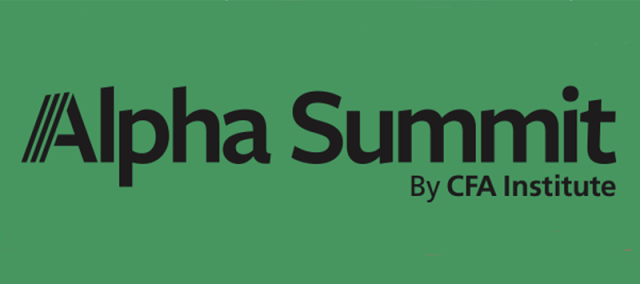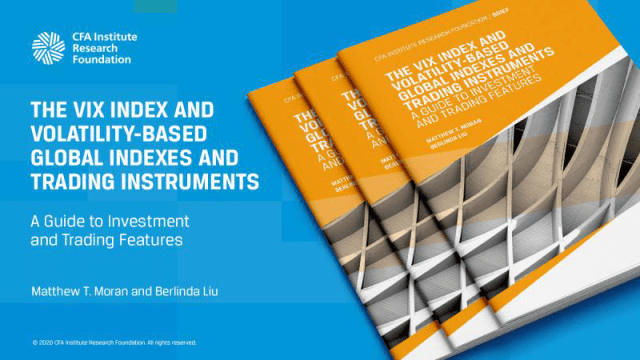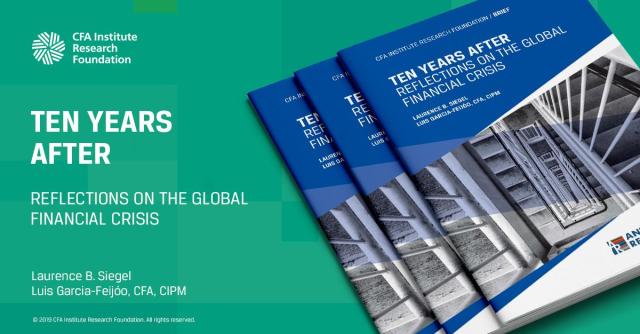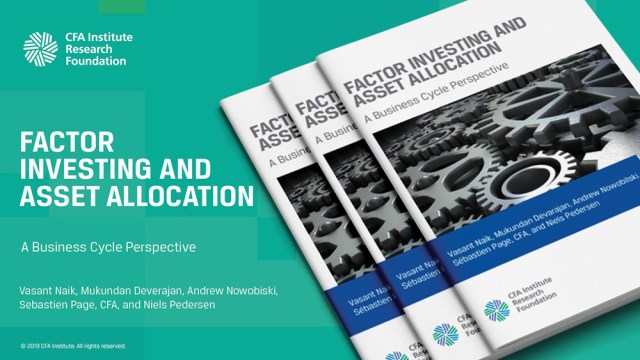[ad_1]
What do the coronavirus pandemic and the resulting market volatility have to teach us about risk, uncertainty, and investment decision making?
Annie Duke and Morgan Housel explored this question in depth in a conversation at the 73rd CFA Institute Annual Virtual Conference last month that yielded a three-step rubric to help investors navigate the tumult.
Housel, a partner at the Collaborative Fund, summed up the dilemma and the current environment at the outset.
“I as an investor never thought that I would see a time in my life that was crazier than 2008,” he said. “And here we are. By any definition the last couple months have exceeded 2008 in almost every aspect, and certainly, as a student of history, I never thought we would be looking at an economy that by many metrics rivaled the Great Depression.”
So what’s a thoughtful investor to do? How do we forecast and plan for the future amid so much uncertainty?
“The best way that you can be a decision maker in this type of environment,” Duke said, “is not to demand certainty, but to demand the broadest view of what the possible paths are.”
And to do that requires an understanding of how we make our decisions and what determines their outcome.
According to Duke, that process is governed by two principal components: imperfect information and luck.
Data’s Downsides
We build our models and make our investment decisions based (hopefully) on data. But we shouldn’t place too much faith in it. Data, by its nature, is flawed.
“It gives you the illusion that you have the truth,” Duke said. “Data are not truth. Data are facts that we have out in the world that have been collected for a particular purpose and then we model the data.”
And how the data was collected and who is interpreting it influences both the resulting models and how we view their outcomes. A dozen researchers given the same dataset could come up with a dozen completely divergent forecasts.
Another problem with data: There’s too much of it.
“When there is so much data around us,” Housel said, “whatever you want to prove, you can prove it with data, not just dogma.”
Which means confirmation bias is easily fed.
“More data increases your confidence, but not necessarily your ability,” he said. “There’s a great quote from from [Nassim] Taleb that I love where he says, ‘Big data [brought] cherry picking to the industrial level.’”
But overconfidence is not the only downside. The data overload can have an opposite and equally damaging side effect: decision aversion.
“It can cause analysis paralysis,” Duke said. “Because we can think, ‘If I just went and got more data that I’d have the answer.’ And then all of a sudden you’ll find it impossible to decide.”
The Luck of the Draw
Duke’s emphasis on the influence of luck in decision making illustrated a compelling point: Models are built based on probabilities, but we tend to judge decisions based solely on outcomes.
“People don’t think probabilistically,” Housel said. “They think black-and-white binary. You’re either right or you’re wrong.”
So if we make an investment based on having 90% certainty about a particular outcome, by definition, there’s a 10% likelihood that it won’t work out. But if it doesn’t work out, that doesn’t mean it was a bad decision, or that similar investments should be avoided in the future.
By the same token, we can make bad decisions that turn out well by, say, betting on that 10% outcome and guessing right. So what was actually a poor and risky choice looks exactly the opposite. In either case, it’s easy to draw the wrong lessons.
Duke offered a strategy to avoid such extrapolations.
1. “Make Your Forecast Explicit”
“When you’re making decisions, as much as possible, try to make your forecast explicit,” she said. “Try to make your scenario planning explicit, try to write down what the reasons are, what the beliefs that you have are, and what the facts of the world are that make you believe that this is a good bet, and just record it. Track your knowledge.”
This way, we take much of the emotion out of the equation and approach both the decision-making process and the decision itself in a more antiseptic, clinical fashion.
Then we can look at each security we own and go back and refer to the rationales for why we bought it in the first place, what our expectations were, where we were in the portfolio construction process, etc. Then, if the stock market starts to soar and we’re disappointed by our 60-40 equity-to-bonds split, we can revisit the underlying logic and understand the conditions that motivated the decisions to construct the portfolio in that particular way. Were they based on our risk tolerance, how close we were to retirement, what the market dynamics indicated in the moment?
“Once you do that,” Duke said, “you can start to disconnect yourself from the actual outcome. It’s much easier to go back and say, ‘Given what I knew at the time, this was a totally reasonable choice to make.’”
2. “Demand the Broadest View”
But making our scenario explicit doesn’t explain how we come up with that scenario.
And forecasting is probably more of a fool’s errand today than it ever was.
“The crash in March very few people foresaw coming, and then the surge in April, almost no one saw coming,” Housel said. “At what point are we going to say we don’t know what’s going to happen next?”
Our forecasts need to acknowledge that uncertainty.
“This is a time when volatility is really, really high,” Duke observed. “We’re much more keenly aware that there are unknown unknowns. We think about the things we know, the things we know we don’t know, and then the things we don’t know we don’t know. And there are those three categories and right now all of those things are amplified.”
She and Housel referenced the various COVID-19 epidemiological models and how they were disseminated to illustrate the depth of our ignorance of the disease, how wide the spectrum of potential outcomes, and how numerous the associated variables. The same uncertainty applies to the markets.
With coronavirus, there were forecasts from Imperial College, Johns Hopkins University, and elsewhere all presenting a wide range of scenarios.
“Columbia had three different models that were toggling social distancing, and they all had ranges within them,” Duke said. “All these models are giving you different views of the future, and instead of saying which one is the answer, we might be better off saying, ‘Well let’s look across all of them and see how we could sort of plan the best for any of these possibilities occurring.’”
As investors, we need to apply that same lesson, that same philosophy, to our forecasts. In this environment and amid this degree of uncertainty to overly index to one version of the future is reckless and irresponsible.
We have to accept that there is no right answer in this market or any other. But some answers are better than others.
“Doing well over a long period of time is not necessarily about finding the right answer, making the best decision. It’s about being able to thrive amid the broadest range of outcomes,” Housel said. “Having the widest range of outcomes being acceptable to you is a huge part of just surviving as an investor over time.”
Because over time is when the full benefits of compounding are realized.
3. In investing, there is no substitute for humility.
Finally, we need to remember that just because our model performed well doesn’t mean it was accurate, that it worked for the reasons we theorized, or that we were “right.”
“You can see with growth and value investors where even if [the model’s] correct in a particular environment, it might not be correct going forward,” Duke said. “So you have to hold those models very loosely.”
So we have to stay humble and assume that what truly drives market movements is unknowable. Our focus should not be constructing the most accurate forecast of the future, but safeguarding ourselves from the unknown.
“Protect yourself against the uncertainty,” Duke said. “You’re not trying to be a perfect predictor of what’s going to go up or what’s going to go down. You’re just saying, it might go up and it might go down and how do I deal with that.”
To be sure, that may not sound like the confidence of the prescient stock picker. But that’s largely the point.
“The more humility you have, the more that you go into your portfolio construction saying, ‘I don’t really know how the world is going to go,’” Duke said. “The people who do well through any financial crisis tend to be the people who don’t do too much and just kind of say, ‘Okay I’m just going to cover my bases.’”
If you liked this post, don’t forget to subscribe to the Enterprising Investor.
All posts are the opinion of the author. As such, they should not be construed as investment advice, nor do the opinions expressed necessarily reflect the views of CFA Institute or the author’s employer.
Image credit: ©Getty Images / stevecoleimages
Professional Learning for CFA Institute Members
CFA Institute members are empowered to self-determine and self-report professional learning (PL) credits earned, including content on Enterprising Investor. Members can record credits easily using their online PL tracker.
[ad_2]
Image and article originally from blogs.cfainstitute.org. Read the original article here.





